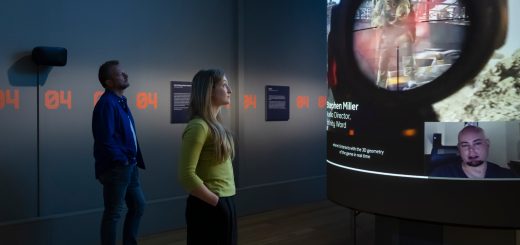Inside the legendary unsolved heist that haunts GTA 5
Every few weekends, my wife and I go for a drive in Los Santos. Itineraries vary. Sometimes we get a submarine and explore the oceans. Sometimes, inspired by shows like Million Dollar Listing and Selling Sunset, we head up to the Hills and have a pleasant in-game evening racing through rich people’s backyards. My wife knows the game much better than me, which makes for an unusual dynamic. I know Los Angeles, which Los Santos is based on, but she is far more familiar with Rockstar’s version. In other words, I’m often a backseat passenger in the endless lateral tracking shot that defines the common experience of both of these car-centric cities.
A few weeks back, we avoided the usual stuff, though, and ended up somewhere I had not seen before. We’d decided not to jump the fence at the military base and try to steal a jet – a pass-the-pad process that for some reason we’ve taken to calling “dipping it low”, in honour, perhaps, of the tricky fence position, the chassis-scraping jump, and the Christina Milian banger. We didn’t even head to Nakatomi Plaza, where my wife has an apartment, to spend a happy few hours parachuting off the roof. Instead, in a freeway tunnel somewhere, I was cruising along and I suddenly saw a gap in the wall. “Oh, down there!” my wife said. “It goes deep.” And it does.
I nosed our car through the gap and we spent the next hour or so exploring this strange underside of Los Santos, rattling through storm drains, sewers, and sections of the subway system. It was classic GTA: a world of human detailing, but just about designed to be experienced in a car. It felt sneaky and illicit. And it was also sort of dizzying. I know the city above relatively well now, just from years of watching my wife play. But all of this was lurking underneath the whole time? How did it get there? Why is there so much city under the city in this game?
The answer to this question – and to most things in my life – resides in one of my favourite books of the last 10 years. A Burglar’s Guide to the City, by Geoff Manaugh. I know I’ve mentioned this before on Eurogamer. I will not stop mentioning it until everyone has a copy, frankly. It’s a book that explores the fascinating ways that criminals utilise the urban environment. It’s the book I most often give as a birthday present. It’s one of those rare books that genuinely changes the way you look at the world.
Part of Manaugh’s thesis is that burglars are super-users of the environment. They’re incredibly creative when it comes to moving about the urban world, dropping in through the roof, smashing through walls, jimmying windows, and drilling. Oh, the drilling.
Inevitably, this is a book about LA as much as it’s a book about burglary. Inevitably because, as Manaugh memorably points out, for a period in the 1990s, LA was the bank robbery capital of the world. A lot of this came down to the freeway system: Manaugh talks about stop-and-rob banks, located near freeway on- and off-ramps that were so conducive to fast getaways the banks could essentially be robbed on a whim. These are banks where it would have been stupid to rob them. But there’s also something else. LA is a city unlike any others. Hugely wide, hugely scattered, home to all kinds of weird architectural follies and preoccupations, there’s just something about this place that encourages people to be creative with the landscape and the way they use it.
All of which is to say this:
“In June 1986, employees at a First Interstate Bank in Hollywood, at the corner of Sunset and Spaulding, in a building that now houses a talent agency, began to report strange mechanical sounds coming from the ground near the vault.”
So begins Manaugh’s telling of the story of the Hole in the Ground Gang, some of the most daring and creative bank robbers to ever play the game.
The strange mechanical sounds were investigated, Manaugh continues, but the sensors had not been tripped and nobody could find any signs of anything awry. The police dismissed the reports as “just a rat running around inside the walls or something.” But the sounds continued for a week. The power sometimes cut out along with the phones. “Then,” writes Manaugh, “the internal Muzak system abruptly kicked in late one evening, startling a manager who was there alone working overtime.”
All of this was the result of a small team of burglars excavating their way into the vault. Muzak aside, they worked meticulously. They took their time. They knew the city’s subterranean waterways and they clearly understood a lot about mining. They had access to storm-sewer maps, utilising connections that “were by no means obvious, knowing that a manhole several blocks away from a bank might take you within a few hundred feet of the vault.”


